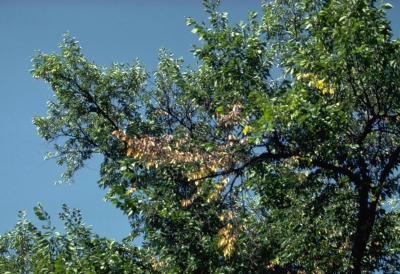What is Dutch Elm Disease?
When it comes to treating Dutch elm disease, early detection and immediate treatment increase your odds of success. It is easier to recognize Dutch elm disease in early to mid-summer. An infected elm will have wilted and yellowing leaves on one or more branches. In autumn, this 
If you notice yellowing or browning of leaves, cut the branch at an angle and inspect the cut for a brown ring or streak. If present, Dutch elm disease could be present.
Also inspect the bark on the trunk and branches for small holes, which may indicate the presence of the bark beetle. Peel away the bark and look for evidence. The elm bark beetle lays its eggs as it moves under the bark. As the eggs hatch into larvae, the migration of the beetle and larvae create a spider web appearance.
Treating Dutch Elm Disease
Treatment typically includes eliminating both the beetle and the fungus. If a cut branch shows the brown ring or streak of the fungus, remove the infected branch by cutting as far away from the infection as possible. Ten feet below evidence of the fungus is ideal.
If signs of the beetle are present, cut away these branches as far from the infestation as possible. Remember to immediately move infected branches away from your trees, and dispose of them by chipping or burning. Check with your municipality to determine if local ordinances that govern disposal exist.
In addition to removing branches, application of a fungicide may be required. If the bark beetle is present, application of an insecticide to the lower portion of the tree might be necessary.
If your elms show signs of Dutch elm disease, contact SprayTech, Colorado tree health experts, at 720-248-0000 to discuss control options or request a quote.

